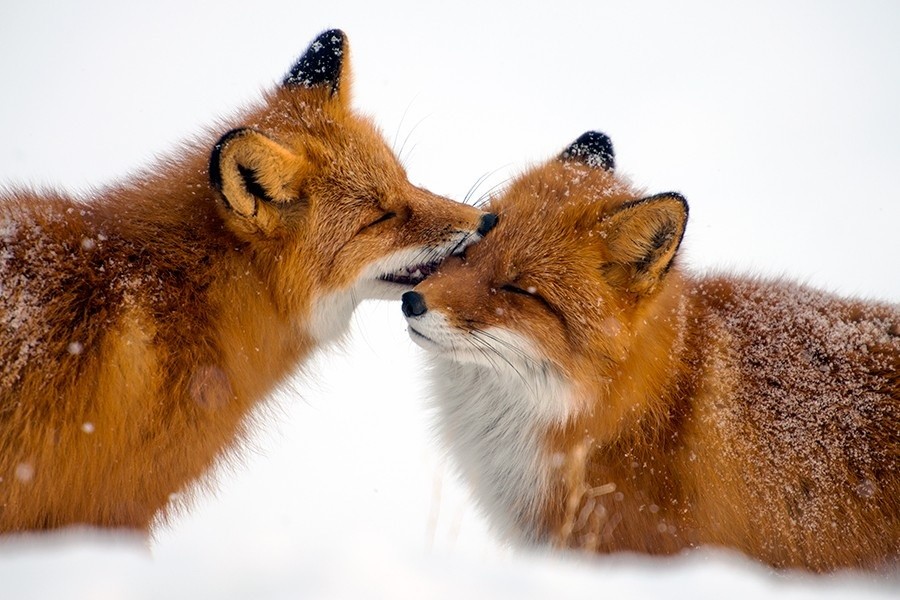Secret lives of Far East foxes caught on camera (PHOTOS)


Photographs of foxes blew up the Russian internet. They were all taken by photo enthusiast Ivan Kislov on the Chukotka Peninsula.
Ivan Kislov
Chukotka is a region in Russia’s Far East. The distance from Moscow to the capital of the Chukotka Autonomous Region, Anadyr, is 3,844 miles (6,186 kilometers), or an approximately 8-hour flight.
Ivan Kislov
Ivan Kislov, 31, works as a mining engineer in Chukotka. In his free time, he photographs local wildlife and nature. His lens comes across rabbits, wolves, and even wolverines.
Ivan Kislov
Even though Ivan never studied photography, he has won awards several times in prestigious photo competitions, particularly National Geographic Russia and the Arctic Global Awards.
Ivan Kislov
Ivan told rosphoto.com: "When I was 6 years old, my grandfather gave me my first camera. It was a Kiev rangefinder. My father taught me all the processes of developing and printing pictures."
Ivan Kislov
"Ever since then, photography has been my hobby. In 2008, I got my first digital camera. I subscribed to magazines, read books, and talked to people with the same interests. I guess you can say that photography is a hobby that's followed me since childhood."
Ivan Kislov
Photography buffs will be interested in knowing that he uses a Nikon D800 with 16-35/4, 24-70/2.8, 70-200/2.8 lenses.
Ivan Kislov
The photographer finds the shooting process to be especially interesting. He especially likes observing animals through his lens. Bad weather gives his photos a certain intrigue and brings them alive. "I really love taking pictures of animals, precisely in bad weather."
Ivan Kislov
"The animals I love to photograph the most are foxes. They come out very real in pictures," Ivan says.
Ivan Kislov
The red fox is the most common predator in Chukotka listed in the IUCN Red List of Threatened Species. Foxes here differ in their lighter color and larger size, which is characteristic of animals that move from south to north.
Ivan Kislov
In the north, especially in the mountains, there are also foxes with black and other-colored furs, like blackish brown. The most common type of colors is a bright red back, a light-colored belly, and dark paws.
Ivan Kislov
Chukchi foxes' primary nutrition consists of small rodents (field mice, lemmings) that they can find even under the snow. Sometimes the foxes are even up for catching birds, even making runs on chicken coops. But this happens a lot less often than old wives' tales would have it.
Ivan Kislov
When looking for its next meal, the fox is endlessly cunning. It can play dead or intrigue its prey by its strange behavior.
Ivan Kislov
Foxes tend to be very patient, which is important, as ambushes are the main way that they catch their food. Nevertheless, foxes have often been observed lying in wait on the usual paths taken by hares or baby deer.
Ivan Kislov
There are a total of 400 different kinds of plants and animals that the fox consumes, including watermelons (in Chukotka, these are, of course, grown in greenhouses). Foxes can also eat other fruits and berries.
Ivan Kislov
Sometimes foxes are very cautious when humans appear, running away or looking for shelter. However, they sometimes show unusual trust.
Ivan Kislov
Many animals in Russian folktales act anthropomorphically, speaking and walking on two legs. Each animal also has a characteristic associated with it. Hares are cowardly, bears are strong, and foxes are cunning.
Ivan Kislov
This is also reflected in popular sayings. “The fox always hides its tail.” “You’ll never trap an old fox twice.” “A fox will outwit seven wolves.”
Ivan Kislov
The name ‘fox’ can also be used allegorically to refer to a clever, even cunning person. But when looking at these charming little foxes, do you really think it’s possible to give them a negative trait? We don’t think so either.
Ivan Kislov
No foxes were harmed during the making of these photos.
Ivan KislovAll rights reserved by Rossiyskaya Gazeta.
Subscribe
to our newsletter!
Get the week's best stories straight to your inbox